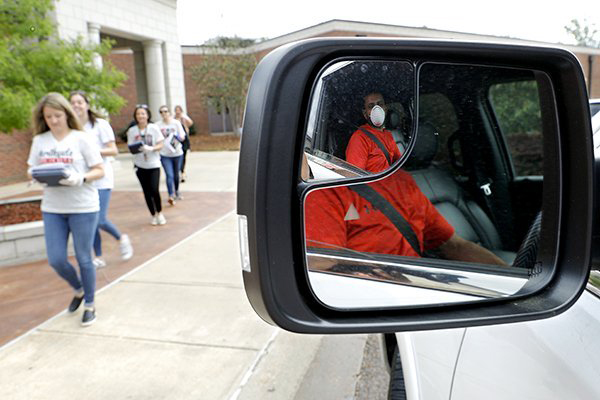
By Benjamin Herold
https://www.edweek.org/ew/articles/2020/03/26/the-scramble-to-move-americas-schools-online.html
America’s sprawling K-12 public education system is scrambling to move online, almost overnight, with little time to plan and even less clarity about what happens next. Undertaken in response to the spiraling coronavirus crisis, the massive and scattershot transition has shifted much of the burden of schooling onto overwhelmed parents and caregivers, highlighting both the enormous potential and profound limitations of classroom technology.
Continuity vs. Flexibility
“The first question is how do we survive between now and the end of June,” said Michael K. Barbour, an education professor at Touro University California and an expert on virtual learning. “But we really need to start talking about what this looks like a year from now.”
In the short term, the coronavirus pandemic has left school systems across the country navigating an unprecedented dilemma, said Earl Aguilera, an assistant education professor at California State University, Fresno, who studies the role of technology in schools and society.
Should districts seek to maintain continuity and offer structure, by moving as much of the normal school day as possible online? Or should they embrace uncertainty and prioritize flexibility, by being as responsive as they can to the ever-shifting demands of an escalating emergency?
The 356,000-student Miami-Dade County Public Schools has taken the former approach, leveraging its existing ed-tech infrastructure and invoking its emergency “instructional continuity plan,” originally developed with an eye toward maintaining operations in the wake of a hurricane or other natural disaster. The district is planning to distribute tens of thousands of Chromebooks. Homebound children are already accessing the district’s core curriculum via online learning programs such as iReady and Edgenuity. Teachers are expected to monitor their students’ performance and communicate with them daily.
“M-DCPS is committed to ensuring the highest level of academic excellence, no matter the circumstances,” the district announced in a March 20 press release.
In the Boston suburbs, meanwhile, the 7,200-student Lexington, Mass., school district has taken the opposite tack. Last week, superintendent Julie Hackett rolled out a remote learning plan that stressed scaled-back expectations. Until school buildings re-open, Hackett urged Lexington families to anticipate that structured learning time will be reduced by half. Teachers will scale their workdays back significantly. Students will receive feedback, not grades. The district’s academic focus will be on reinforcing what’s already been taught, then providing students with opportunities for independent work that doesn’t require their parents to magically learn how to teach a child to read, or understand algebra, or pass the AP Physics exam.
“The traditional school day as we once knew it has completely changed,” the superintendent wrote in an open letter to the Lexington community on March 23. “We are in the midst of a global health crisis, necessitating a shift in our teaching and learning priorities.”
In between those poles, thousands of other school systems have adopted a hodgepodge of strategies.
According to the Education Week Research Center survey, 37 percent of teachers said they had interacted with students at least once per day since their school was closed due to the coronavirus, while 16 percent said they had not interacted with their students at all. In the same survey, the vast majority of district leaders said that at least some of their students are able to access digital content via an online learning e system. But more than half of those same leaders said they were not able to provide online learning opportunities to all students.
On the ground, remote learning in some communities has been limited to photocopied worksheets. In at least seven states, teachers are delivering lessons on public television via school district partnerships with local PBS affiliates. Other districts have focused on curating and distributing links to free online learning sites such as Khan Academy. In some schools, teachers are posting lessons and homework assignments to learning platforms such as Canvas or Google Classroom, where students can also upload their work. Elsewhere, schools are focused on maintaining social connections among staff and students, encouraging them to meet during virtual office hours or share photos on Seesaw.
The variety of approaches is staggering. But a common thread runs throughout.
No matter what districts are doing, many of the nation’s children are currently attending school in their beds and on their sofas and at their kitchen tables, alongside siblings and pets, with laptops and tablets and textbooks that offer only a partial connection to the rest of the world. That means that parents and caregivers, often juggling work-from-home obligations and money worries of their own, are now also responsible for shaping the day-to-day education of the country’s children.
“It’s been an incredible shock for families,” said Robin Lake, the director of the Center on Reinventing Public Education, a research and advocacy organization that has been tracking districts’ responses to the coronavirus crisis.
Read more:
https://www.edweek.org/ew/articles/2020/03/26/the-scramble-to-move-americas-schools-online.html